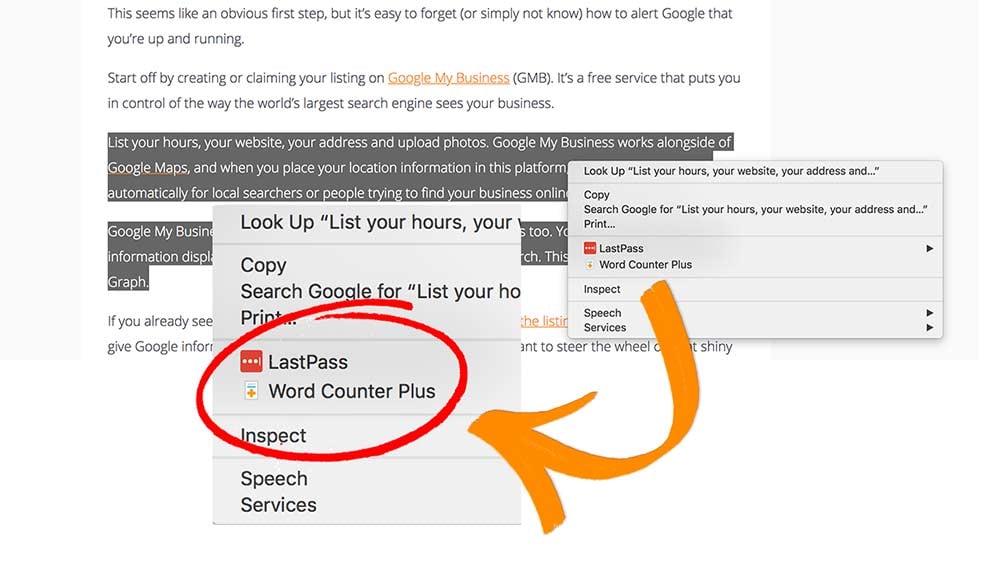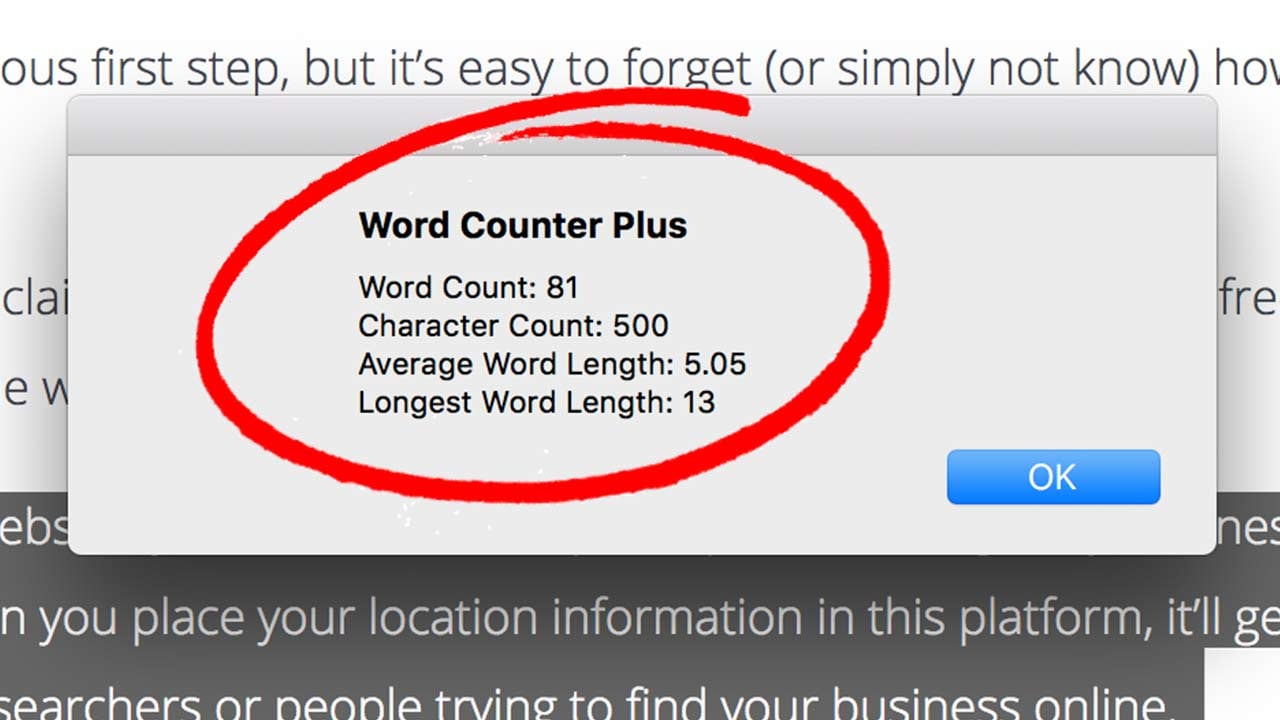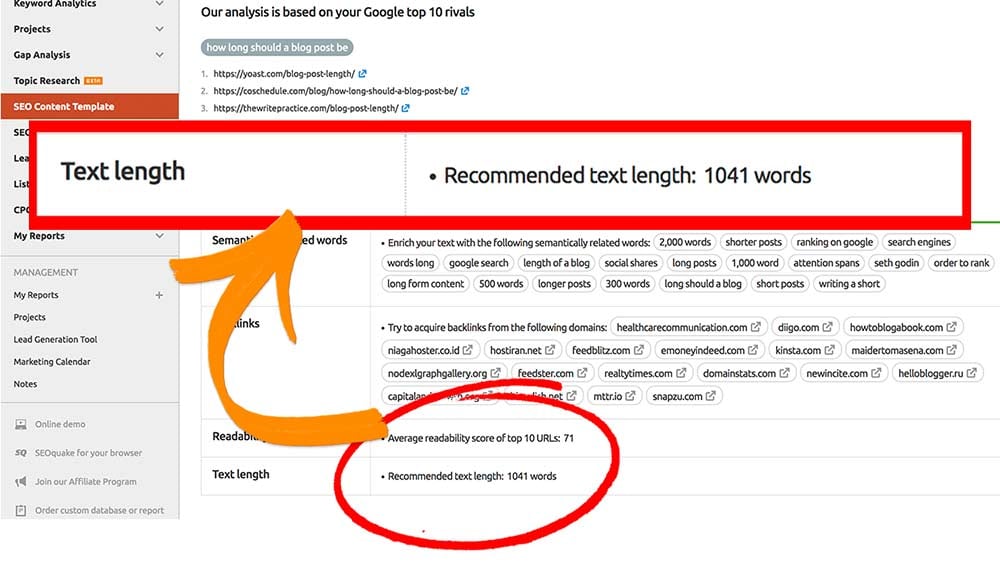Writers with a background in journalism are used to meeting a set word count. In the world of print, word counts exist so your content can fit in the given real estate of the page. As online bloggers, many of us digital authors don’t have such strict guidelines.
But, oh, how some writers love structure.
Not only do some of us need a recommended word count to soothe our neurotic souls (how are we supposed to know when to stop?), but establishing a clear goal helps us to appropriately pace our content flow. Perhaps most importantly, content length— and depth— can help our blog content rank on Google.
So how long should a blog post be? This is absolutely going to vary on an article-by-article basis— but that vague answer is not what you came here for.
The truth is, there’s many factors that influence your article length, from your breadth of coverage to your specific keyword targets. We’re here to cover it all.

Word Count Thresholds for Writers
Many articles address the “word count” debate by asking what your goals are. They’ll wonder, “Are you trying to get shares? Comments? Traffic to your services page? Leads?”
That’s a misguided approach, because, in the digital writing world, all these things matter. You don’t need to curtail your word count to each goal specifically. We all hunt for the crown jewel of the online kingdom: organic ranking.
For the sake of understanding standard best practices, let’s begin by looking at what others are doing:
- 300-500 words. People will try to tell you content with roughly this count can rank, and while it could, these baby blogs are the exception to the rule. Ain’t nobody making waves with an article that takes roughly one minute to read.
- 750 words. Most professional journalists shoot for this word count, especially in the world of online newspapers. This text length is consumable, get shares on social and comments. While you can rank organically with 700 words, most of these pieces aren’t evergreen and traffic isn’t going to be flooding in long-term.
- 1,000-1,500 words. This is often viewed as the bliss point for most bloggers, as it’s a hefty but not an overly lofty word count. In fact, that’s about the length of this article. If the content is well optimized and solves a problem, this could be a healthy text length for generating consistent traffic.
- 2,000-2,500 words. Holy smokes! That’s 10 pages, double-spaced. That’s a freaking college essay! But the reality is, study after study— including one from the beloved marketing gurus at HubSpot— reveals that 2K+ is where it’s at in the ranking game, baby.
This 2,000 words “ish” post length paints a broad picture of what the best of the best are doing to rank. But this word count isn’t applicable to all topics and keywords— and overlooks a HUGE element, depth.
A short article with greater depth can rank higher than a long-form post with poor breadth of coverage. This is a crazy important idea, so let’s say that again: while an article between 1,000 and 2,500 words is more likely to rank on page one of Google than one with less words, there’s more to its success than word count: depth.

Blog Length Matters, but Not as Much as Content Depth
When is the last time you read an article and said “yeah, that was just the right word count.” Never. Now— you may have a read and article and thought, “that answered my question… and some questions I didn’t realize I had, actually.”
When searching, a person wants to get their answer quickly. If they have to dig too far, you’re going to lose ‘em. However, these hungry hippos are here to eat. It’s those meals with lavish sides, a splash of bubbly and artfully prepared desserts we remember— not the everyday dinner.
Download our Beginner’s Guide to Business Blogging to get your website some traffic.
Go beyond the standard answer and dress it up with above-and-beyond fixings. That’s content with depth. If you serve up a mean entree and give website visitors more to consume, they’ll likely indulge.
Content with depth covers the main idea, then proceeds to address a variety of related topics and associated thoughts to not just satisfy, but to delight the reader.
For example, this tangent on the subject of “depth” gives this very article added depth! It’s no longer just giving you the answer you thought you were coming for (AKA determining how long should a blog post be).
It’s leveraging that initial question and widening the answer to address broader topical coverage, discussing things related to your problem with more detail. In the end, it all relates to and actually expands on the searched query, beyond just a cut and dried answer.

How Can I Add Depth to My Blog Post?
Here’s a few ways to add more value to your blog posts and feed your readers the crème de la crème of content on the topic at hand:
- Identify and immediately communicate that you know their motivation, or why they are searching for this topic. // In this example, someone might be looking up a blog on content length recommendations to improve their search rankings. Determine your persona’s pain points and their big why to set the stage for uncovering a more robust breadth of their curiosities.
- Really expand on your answer. // Research what already ranking authors had to say about the topic. Then, explain it more clearly, or in more detail. Be thorough in your explanation, but don’t ramble on for the sake of upping the word count. Be comprehensive and thorough, not fluffy.
- Cover semantic topics that add to, not distract from the original thought. // This content was written to answer the question, “How long should a blog post be?” Because this isn’t a blanket answer that applies to all industries and subjects, it isn’t something that can be easily summed up in a few sentences. We took the time to outline different aspects of this knowledge quest, talking about industry standards, content depth, etc. We’re going to help you determine the right related topics to address in the next section.
- Make genuine (not forced!) connections to naturally continue the problem-solving process. // There needs to be a clear connection between Point A and Points B-D. Oftentimes this is causal, in that understanding A leads you to a more complex solution, like C. Follow a natural progression to the reader’s next thought. For example, since you came here to find the right blog post length (A), you’re getting these wicked tips on depth (B) too. We’re going to offer you a tool for using keywords (C) to help you determine the best word count for your unique piece of content.
- Use headers to separate your content into related sections. // Break your paragraphs down into clear sections, using headers to make it easier for both readers and search engines to process what’s important and see that this onion has layers. If a reader only wants the short answer, they can easily pick and choose what content to consume.
- Keep paragraphs short, and don’t sweat the headline length. // Concerned about how long headlines and paragraphs should be? For online articles, stick to about three sentences a paragraph and around 55 characters a header. Title and paragraph text length isn’t going to make or break your rankings, but it can make your content easier for readers to consume.
- Turn to keywords for competitive comparison. // Dig through the content that’s already ranking. This will help you establish a threshold for word count and depth, helping to steer your approach.
Use Word Count Metrics as a Guiding Light (Not Heavenly Beam)
In order to compete with the competition on the search engine results pages (SERPs), you need to know what you’re standing up against. Google search some queries around your idea to see what others are saying.
Learn More About Business Blogging Services
Add Word Counter Plus to your browser. Once you highlight a paragraph, simply right click and choose the Word Count Plus option.

It’ll show you the word count of that section:

Highlight all the text within a blog post to see the article’s full length. Collect a list of what word count the top ranking results are hitting as a threshold for their level of depth and detail— NOT AS A STRICT METRIC TO BEAT.
You can also use SEMRush for this. Go to their SEO Content Template tab on the left sidebar and enter your proposed keyword into the search bar.

We were trying to rank for the keyword string “how long should a blog post be” in this article, so we used this as the example. At the bottom (circled in red), you’ll see that based on the top 10 organic URLs for this query, the tool recommends shooting for a text length of 1,040 words.
These SEO tools give you an idea of how many words your competitors are using, as a good BASIS for how thoroughly this topic is already addressed.
In the end, you should use these word count metrics to guide your content marketing strategy, not as a definitive benchmark to pass. Remember, a blog with more words doesn’t mean it answers searcher’s questions better or inspires them to keep learning.
Finding Related Topics and Keywords to Include in Your Blog
Not sure what keywords and ideas compliment your blog post topic? These semantic terms and topics need to relate to your current subject, and can be tricky to narrow down.
Read this article all about finding the right keywords to learn more about how you can use the free version of AdWords Keyword Planner and your competitor’s organic data to add greater depth to your blog posts.
Ready to Become a Better Blogger?
Stop focusing so heavily on how long a blog post should be. Instead, use these SEO tools and advice on content depth to write more impactful, better blog posts.
If you’re still relatively new to blogging, you may be struggling to know what to write about, how to optimize your posts for search engines and how to best promote your work. Download our Beginner’s Guide to Business Blogging to get your website some traffic.
In this 83-page ebook, you’ll discover all the blogging fundamentals. Get your business the results you desire, today.





